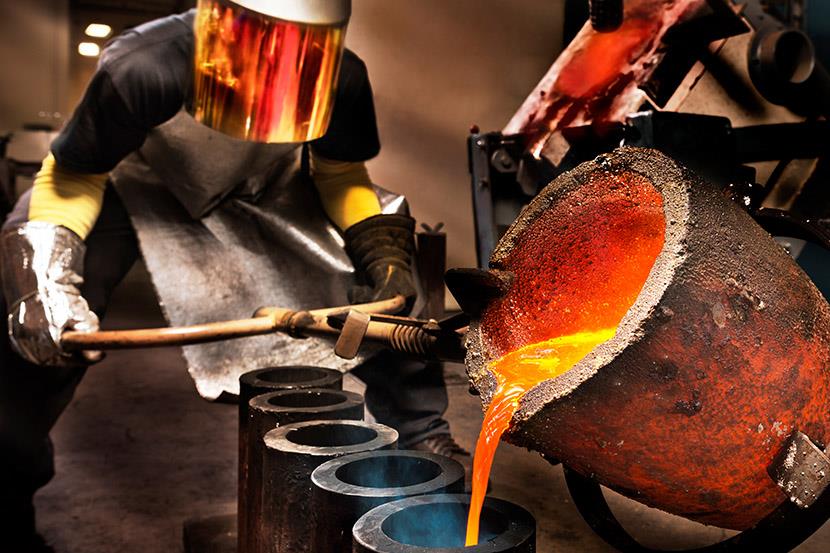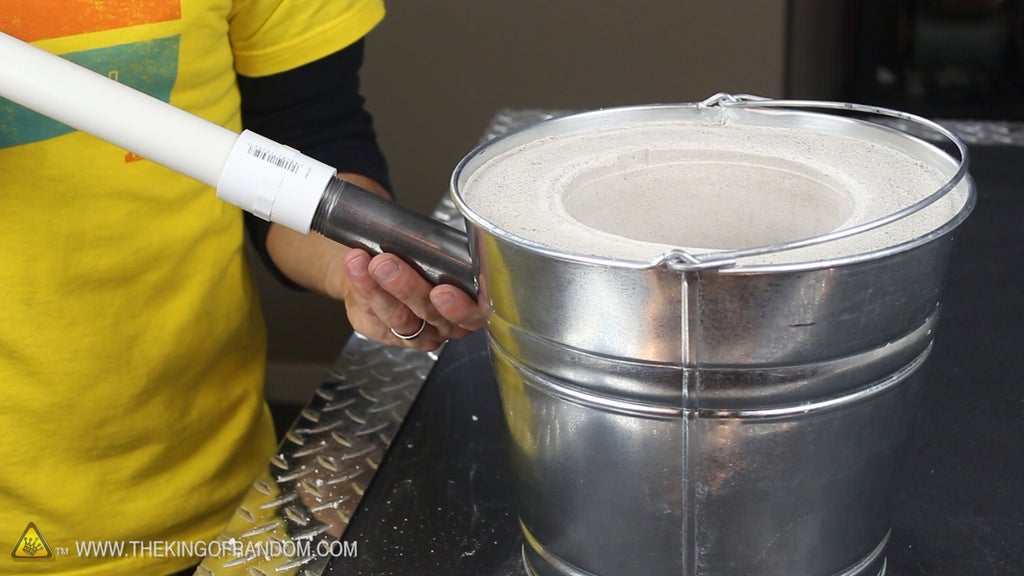Main contrasts between Metal Casting and other metal fabrication techniques
Introducing the Complexities of Design and Manufacturing at a Metal Foundry
The style and manufacturing processes at a metal foundry entail a series of elaborate steps. Each phase, from choosing resources to melting and spreading, plays a crucial function in the last item. Aluminum Foundry. Precision and quality assurance are paramount in this sector. Yet, as technology advances, new technologies are emerging. These developments may redefine conventional methods. What ramifications do these changes hold for the future of steel shops?
The Melting Process: Transforming Raw Materials Into Fluid Metal
The melting procedure serves as the vital initial step in changing basic materials into liquid steel, a treatment necessary for foundry operations. This phase begins with the cautious option of steels, which might consist of iron, light weight aluminum, or copper, depending on the wanted end product. Each product is assessed for pureness and composition to ensure optimal melting problems.

As the steels reach their melting factor, they transform from solid to liquid, permitting further refinement. This process can likewise consist of the removal of impurities through slag development, guaranteeing the top quality of the liquid metal. Inevitably, the effective completion of the melting procedure lays the structure for succeeding metalworking procedures.
Molding Techniques: Forming Metal With Accuracy
Complying with the melting procedure, the following phase in metal foundry operations involves molding methods that shape the fluid metal right into preferred kinds. Various techniques are utilized, each chosen based on the particular requirements of the task. Sand spreading, among the most usual methods, utilizes a blend of sand and binder to develop molds that can be quickly shaped and reused. One more technique, financial investment spreading, involves producing a wax pattern that is coated in a ceramic covering, enabling for intricate layouts and high precision.
Die spreading, in comparison, utilizes high-pressure to inject molten steel right into steel molds, resulting in resilient and uniform items. Additionally, the choice of molding strategy impacts the cooling price, surface area coating, and dimensional precision of the last product. Consequently, comprehending these techniques is vital for optimizing design and making sure the successful manufacturing of steel components customized to particular applications.
Casting Approaches: From Model to Production
Various casting methods are employed in steel shops to move from model growth to full-blown manufacturing. Among these techniques, sand casting attracts attention for its versatility and cost-effectiveness, making it excellent for both large and small production runs. Financial investment spreading, recognized for its accuracy, is often utilized for complex geometries, enabling great details in the end product. Die casting, appropriate for high-volume production, uses liquified metal injected into mold and mildews, offering outstanding surface finish and dimensional precision.

Top Quality Control: Guaranteeing Excellence in Every Pour
While the casting process can vary substantially in between methods, keeping strenuous quality assurance is crucial to ascertain that every pour fulfills the required criteria. Quality control in a metal foundry encompasses a collection of methodical checks and examinations created to determine issues early in the manufacturing process. This look at this site consists of meticulous evaluations of raw materials, monitoring of melting temperature levels, and assessments of mold honesty.
Foundry workers utilize numerous testing strategies, such as non-destructive screening and dimensional confirmation, to determine that castings accomplish wanted requirements. Furthermore, adherence to established sector standards and accreditations improves the integrity of the end product.
Responses loopholes are likewise crucial; any kind of disparities kept in mind during top quality assessments are examined to improve procedures and minimize future mistakes. Inevitably, a culture of quality assurance promotes not just consumer fulfillment however also a track record for excellence in the competitive landscape of metal manufacturing.
Advancements and Technologies: The Future of Metal Foundries
The landscape of steel foundries is quickly evolving, driven by advancements in innovation and innovative techniques. Automation and robotics are changing traditional process, boosting performance and precision during manufacturing. Automated putting systems and robot arms decrease human error, causing higher quality outputs. Furthermore, the combination of expert system is enabling predictive upkeep, optimizing equipment efficiency, and lessening downtime.
Additive production is arising as a game-changer, enabling rapid prototyping and the creation of complex geometries that were formerly unattainable. This innovation facilitates the personalization of metal components, dealing with particular customer demands without considerable time delays.
Sustainability is additionally an essential emphasis, with shops embracing greener techniques, such as recycling scrap steel and making use of energy-efficient furnaces. These developments not just improve productivity however additionally align with global efforts towards ecologically responsible manufacturing, ensuring the future of metal foundries remains durable and affordable in a transforming industrial landscape.
Frequently Asked Questions
What Sorts of Metals Are Frequently Utilized in Shops?
Usual steels utilized in factories consist of aluminum, cast iron, brass, steel, and bronze (Aluminum Casting). Each metal has unique properties, making them appropriate for numerous applications in markets such as auto, aerospace, and construction, to name a few
How Do Shops Manage Waste and Environmental Impact?
Shops handle waste and environmental effect by executing reusing programs, utilizing sophisticated filtration systems, and adhering to rigorous governing criteria. They commonly purchase lasting innovations to reduce emissions and advertise accountable resource use throughout their procedures.
What Safety and security Measures Are in Location for Employees?
Shops carry out different useful link precaution for employees, including individual protective devices, proper ventilation systems, normal safety and security training, emergency response protocols, and stringent adherence to work health laws to minimize dangers connected with harmful materials and devices.
Exactly how Lengthy Does the Entire Manufacturing Refine Normally Take?
The whole manufacturing procedure usually takes numerous weeks, relying on the complexity of the layout and the products made use of. Factors such as mold and mildew prep work, melting, and cooling time substantially affect the general duration of production.
What Are the Key Tests Faced by Metal Factories Today?
Metal foundries today deal with difficulties such as increasing material expenses, rising and linked here fall need, environmental guidelines, experienced labor lacks, and keeping quality assurance. These problems complicate manufacturing performance and success in a significantly competitive market.
The layout and manufacturing processes at a metal foundry entail a collection of elaborate actions. The melting procedure serves as the essential very first step in transforming raw products into fluid steel, a procedure essential for foundry procedures. Adhering to the melting process, the next stage in steel foundry operations involves molding methods that form the liquid metal right into wanted types. Many casting methods are utilized in metal shops to shift from prototype growth to full-blown manufacturing. Quality control in a metal foundry incorporates a collection of systematic checks and assessments developed to determine defects early in the production procedure.